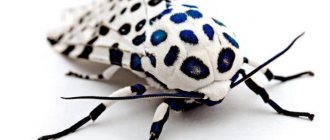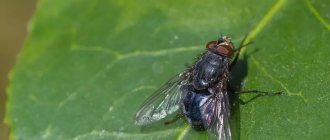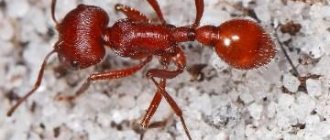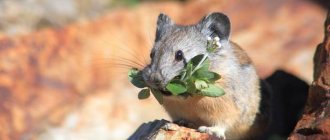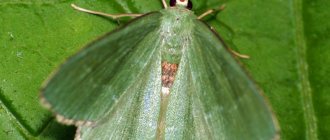Scarab and ancient Egypt
If you watch modern films whose events take place in Ancient Egypt or are somehow connected with it, you get the impression that the scarab is one of the most terrible creatures on earth. The beetle is presented as a ruthless cannibal, from whom it is impossible to escape. Consider the footage of the unfortunate victim being placed in a sarcophagus where hordes of beetles are buried, or when a scarab beetle crawls under the skin of one of the characters. Such moments cause panic fear of a terrible insect.
In ancient Egypt
In fact, the Egyptian scarab is a completely harmless and very useful insect. The Egyptians knew about this and revered these diligent, hard-working beetles. The scarab's journey from east to west, its ability to make perfectly round spheres, and the strength and tenacity required to roll a heavy ball contributed to the fact that these beetles began to symbolize the origin of life and the solar cycle.
When mummifying the dead, the Egyptians placed a figurine of a scarab instead of a heart, so that the insect would accompany the person in the afterlife, helping and supporting him.
How the Egyptians used the scarab symbol
The scarab is a symbol of resurrection, rebirth and renewal of the soul. Used in funeral rites to free the soul. The beetle helped to overcome all difficulties and send the soul to heaven.
In modern times, these funeral rites are not carried out. Despite this, Egyptians still value and respect the symbol and also believe in some legends. The scarab is considered a symbol of the student. The beetle creates a perfectly smooth ball from a shapeless mass. This is how a person gains knowledge and improves.
Some believed that this symbol would help get pregnant
The symbol was used by women wishing to become a mother. In Ancient Egypt, girls were given crushed beetles. The remedy was considered healing and contributed to the normalization of the reproductive system.
The scarab symbol was used in religious texts. This is a kind of connecting element between the divine principle and the human soul.
Now the scarab has no divine significance. However, this particular symbol is often offered to tourists visiting Egypt. The jewelry is made of metal and decorated with stones, mostly green.
The scarab has always been considered a symbol of life. It was believed that the talisman helps fill the body with vitality and make dreams come true. Modern Egyptians treat symbols with respect. Be sure to find out the meaning of the amulet before purchasing. Some are still confident in the powerful power of the beetle.
Symbol in mythology
Among the ancient Egyptians, the scarab, repeating the path of the Sun from east to west, was revered as a symbol of the creator of the world and people - the god Khepri. The deity was depicted as a man with the head of a scarab. In Egyptian mythology, black beetles were considered sacred insects. They symbolized the creative power and warmth of the heavenly body, rebirth in life after death.
Egyptians still treat scarabs with respect, and all the stories about beetles eating people are fictions that contradict real facts. It has been scientifically proven that scarabs are not carnivorous insects. They are unable to eat the flesh of humans or animals.
In what cases and who should wear it?
Wearing a scarab beetle amulet depends on the purpose:
- women wear it to preserve beauty and youth, increase attractiveness, to conceive and give birth to a healthy child;
- men with the help of this talisman increase their strength, courage and determination;
- Students wear the amulet for better assimilation of knowledge, as well as for exams for greater confidence in their abilities.
And for everyone, regardless of gender and occupation, the amulet helps in protection from the evil eye and ill-wishers, as well as in attracting good luck.
How to use the amulet
When using a talisman in the form of a magic beetle, the most important thing is to experience positive emotions towards it.
For the amulet to work better, you should wear it away from prying eyes and closer to the body. The amulet should be “cleaned” before wearing.
Since the dung beetle is born from underground, it has cleansing properties towards it.
In magical rituals, sea salt is often used instead of earth (you need to fill the amulet with it for several hours).
You may be interested in: Burdock of happiness meaning of the Slavic amulet and proper use
In addition, for better functioning, the talisman needs to be charged. You can do this in 2 ways:
- Push;
- from the sun.
The first method is to place the amulet to the chest and mentally pronounce your goals, in the fulfillment of which it should help.
The second method is to place the talisman on the window before sunrise and leave it there until noon. It is believed that in this way the rays of the sun will charge the amulet.
IMPORTANT! During the “charging” process, it is necessary to contact the scarab with a request for well-being.
The modern meaning of the scarab beetle talisman
Nowadays, many are interested in ancient beliefs, esotericism and mysticism. Scarab amulets are very popular. It is believed that the image of this insect will help achieve your goals and provide support and success in any endeavor. Scarab will help women maintain youth and beauty. It will help men achieve financial success and expand their spheres of influence. For children, the scarab talisman will give them a thirst for knowledge and the ability to develop their talents.
It is recommended to wear a talisman as a talisman against evil forces. Many believe that its positive energy will protect against the evil eye and help maintain peace and tranquility in the family.
Description and features of the scarab
Scarabs (lat. Scarabaeus) are a genus of beetles. They belong to the family Lamelidae, a subfamily of scarabaens. The body of insects is wide, oval, slightly convex on top. Sizes from 9 to 40 mm. The body color is black, matte in young individuals, but becomes more glossy with age.
On the wide head, a frontal protrusion and a clypeus with 4 powerful teeth, as well as 2 rather large eyes, are clearly visible. The pronotum is transverse and short, the wings are protected by strong elytra, the length of which is twice as long as the pronotum. The belly and paws are covered with long dark hairs (dark in females, reddish in males).
Appearance
The front legs of the beetle, with which it digs soil and dung, are equipped with spurs and four external teeth. On the middle and rear pairs, with which the beetle forms and rolls balls, there are only spurs. The front legs look more massive compared to the longer and thinner hind legs.
Photo and description of the scarab beetle
It is difficult to find an adult who has not heard about scarabs; for most, they are associated with Egypt, the pyramids, and the pharaohs. But you can also find it on other continents of the globe. Once you know what a known insect looks like, it will be easier to identify it.
A photo of a scarab beetle will tell you a lot about the insect; its characteristic appearance features are:
- Black color throughout the body; adults have a shiny sheen. It is extremely rare to find a representative with a metallic gray color. The green scarab beetle is fictitious; this color is not typical for an insect.
- The shape of the body is oval-elongated, with a durable chitinous coating.
- The head is small relative to the body; it has a clypeus with teeth to facilitate food extraction.
On a note!
The distinctive features of the male and female are the red fringe on the hind pair of legs; nature has endowed this decoration with the stronger half. This type of insect is united by vegetation on the abdomen and legs. The long hairs are considered their calling card, as are the four teeth on the front pair of legs, which are used for digging and forming food into balls for easier transportation.
Scarab beetle
The sizes of individuals may vary. The beetle in Egypt reaches 41 mm in length. There are also smaller individuals - only 9.5 mm in more northern regions.
Kinds
Not long ago, entomologists believed that there was only one species of scarab - the Sacred Scarab. However, not so long ago, scientists identified about 100 varieties of arthropods with similar characteristics and united them into a separate family, the representatives of which differ only in size, color intensity and region of residence. The most famous of them are the sacred scarab and the typhon scarab.
The differences between these types are minimal:
- sacred scarab - an insect measuring 25 - 38 mm, typhon grows to 16 - 30 mm;
- Typhon is distributed more north than all other varieties.
As for the green scarabs often mentioned in books and films, they exist only in the imagination of the authors and in the works they created. This coloring is not typical for real beetles.
Lifestyle and habitat
Scarabs are found in Africa, Europe, and northern Asia. Most species live in the tropics, but beetles can also be found in deserts, semi-deserts and steppes.
Most often, you can see a scarab from mid-spring until the arrival of cold weather. The beetles are active during the day and burrow into the ground on cold nights. As the air warms up, most species become nocturnal.
The scarab is the most famous of the dung beetles. This is a hardworking, strong insect. The beetles gather in large groups and fly from place to place, following herds of large herbivores. Sometimes they simply flock to the smell of fresh manure, which they can smell from several kilometers away. Scarabs make perfectly round balls from the dung they find, weighing tens of times their own. They then roll the balls (always moving in an east-west direction) to a suitable location, where they bury them in the ground.
In winter, beetles do not hibernate, but take refuge in deep holes dug in the ground, where they feed on pre-made supplies.
Nutrition
Mammal dung (mostly cattle) is the only thing the scarab beetle feeds on. From the fresh excrement found, the insect forms a ball with the help of its head and paws, which it then climbs onto and continues, by pressing, to attach more and more pieces of manure to the base, forming a ball of ever larger size. Next, the beetle needs to roll the prey to a secluded place as quickly as possible, since another scarab may encroach on it, and then a fight cannot be avoided.
Nutrition
Usually the scarab rolls the ball to a distance of 10–30 m, then digs a hole where it buries its prey. For the next 1.5–2 weeks, the beetle’s home will be a place next to the successfully produced dung ball. When the food runs out, the insect goes in search of a new food source.
Reproduction and lifespan
Pairs that will give birth to new generations of scarabs are most often formed precisely in the process of rolling dung balls together. Usually the male joins the mature female forming the ball, beginning to help her. Next, the insects dig a tunnel together, which at a depth of 15–30 cm ends in a wider chamber. The partners roll dung balls there and then mate there, after which the male leaves and the female begins to prepare for laying.
She makes small pear-shaped lumps of manure. It lays one egg in the narrow part of each lump. One female can lay from 4 to 20 eggs. When everything is finished, the insect buries the tunnel, leaving eggs and a supply of food in it.
After 10–14 days, larvae emerge from the eggs, which grow and develop for 30–35 days, feeding on the manure left by their parents. The larva then turns into a pupa, from which a beetle emerges after a couple of weeks. Scarabs remain underground for quite a long time, until autumn or spring rains soften the soil.
The average lifespan of a scarab is about 2 years.
Interesting facts about the scarab beetle
Today people know many interesting facts about the scarab beetle:
- The insect is considered the most hardworking creature in the whole world.
- Scarabs are one of the most powerful creatures on the planet. They are able to move an object up to 90 times their own body weight.
- The creature has a unique natural gift - to create a perfectly regular ball of dung.
- The beetle is shrouded in mysticism and mysteries of the past. They are considered sacred beings and symbolize deity.
